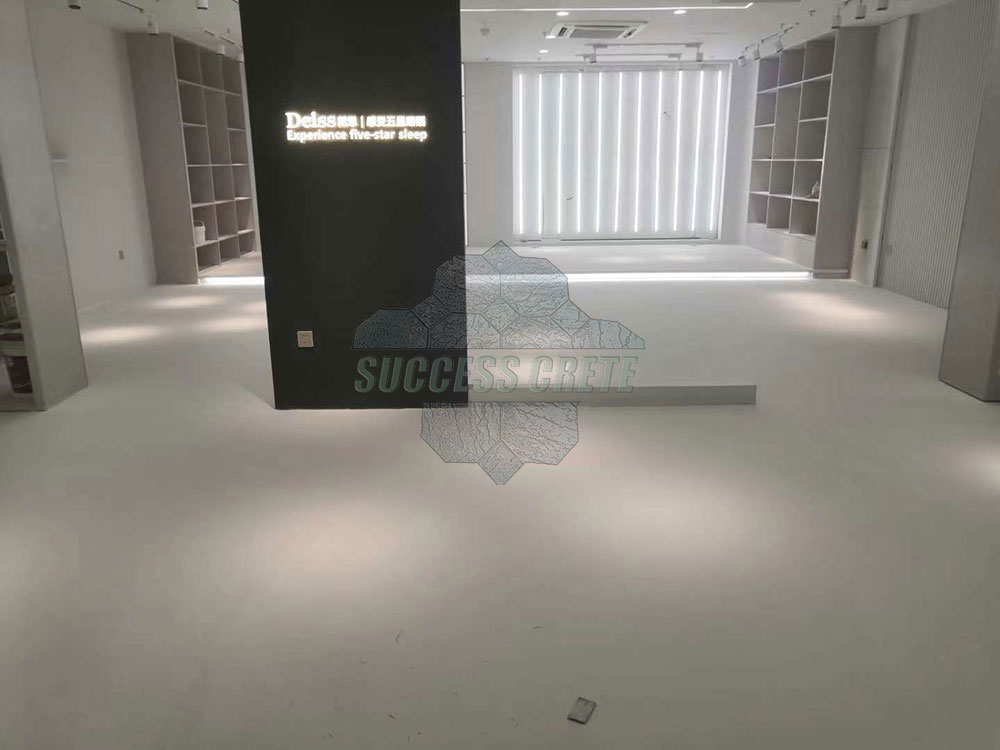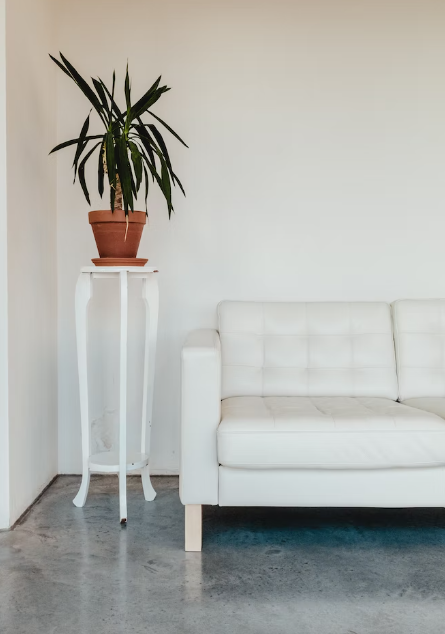Introduction
Concrete is everywhere!
In large buildings, bridges, roads, and sidewalks – concrete has proven itself to be a material with many uses.
But why do we use concrete? The main reason Concrete floors are so widely used is their sheer durability.
We know from concrete roads that can withstand heavy traffic and concrete structures that can last for centuries that concrete is highly resistant to wear and tear.
In addition, the economical nature of concrete makes it the material of choice for the construction industry.
Not only do Concrete floors provide superior strength, but concrete structures also provide insulation from heat and sound.
Not only that, but as architects continue to look for materials with additional benefits such as low maintenance and sustainability, concrete remains a top choice that has grown in popularity over the years.
In this post, we will detail:
- What is concrete?
- How many types of concrete
- The Pros and Cons of self-leveling Concrete
- Are Concrete Floors Cheaper than Wood?
- Self-leveling concrete vs cement
What is concrete?
Concrete, in construction, structural material consisting of a hard, chemically inert particulate substance, known as aggregate (usually sand and gravel), that is bonded together by cement and water.
The history of Concrete
Among the ancient Assyrians and Babylonians, the bonding substance most often used was clay.
The Egyptians developed a substance more closely resembling modern concrete by using lime and gypsum as binders.
Lime (calcium oxide), derived from limestone, chalk, or (where available) oyster shells, continued to be the primary pozzolanic, or cement-forming, agent until the early 1800s.
In 1824 an English inventor, Joseph Aspdin, burned and ground together a mixture of limestone and clay. This mixture, called portland cement, has remained the dominant cementing agent used in Concrete floors production.
Britannica Quiz Building Blocks of Everyday Objects
Aggregates are generally designated as either fine (ranging in size from 0.025 to 6.5 mm [0.001 to 0.25 inch]) or coarse (from 6.5 to 38 mm [0.25 to 1.5 inch] or larger).
All aggregate materials must be clean and free from admixture with soft particles or vegetable matter because even small quantities of organic soil compounds result in chemical reactions that seriously affect the strength of the concrete.
The characteristics of concrete
Concrete is characterized by the type of aggregate or cement used, by the specific qualities it manifests, or by the methods used to produce it. In ordinary structural concrete, the character of the concrete is largely determined by a water-to-cement ratio.
The lower the water content, all else being equal, the stronger the concrete.
The mixture must have just enough water to ensure that each aggregate particle is completely surrounded by the cement paste, that the spaces between the aggregate are filled, and that the concrete is liquid enough to be poured and spread effectively.
Another durability factor is the amount of cement in relation to the aggregate (expressed as a three-part ratio—cement to fine aggregate to coarse aggregate).
Where especially strong concrete is needed, there will be relatively less aggregate.
Strength of concrete
The strength of concrete is measured in pounds per square inch or kilograms per square centimeter of force needed to crush a sample of a given age or hardness.
Concrete strength is affected by environmental factors, especially temperature, and moisture.
If it is allowed to dry prematurely, it can experience unequal tensile stresses that in an imperfectly hardened state cannot be resisted.
In the process known as curing, the concrete is kept damp for some time after pouring to slow the shrinkage that occurs as it hardens.
Low temperatures also adversely affect its strength.
To compensate for this, an additive such as calcium chloride is mixed in with the cement.
This accelerates the setting process, which in turn generates heat sufficient to counteract moderately low temperatures. Large concrete forms that cannot be adequately covered are not poured in freezing temperatures.
How many types of concrete
Here I summarize 25 more common types of concrete, please read on.
The 25 more common concrete types
1. Plain concrete – It is the simplest kind of concrete that does not require any reinforcement. The most commonly used mix is cement, aggregates, and water in the proportion 1:2:4. The density of this concrete is between 2200 and 2500 kg/cubic meter, whereas its compressive strength is in the range of 200 to 500 kg/square centimeters.
Usually, plain concrete is used for constructing pavements, footpaths, and buildings in areas that do not require high tensile strength.
2.Self leveling concrete –Self-leveling concrete has polymer-modified cement that has high flow characteristics and, in contrast to traditional concrete, does not require the addition of excessive amounts of water for placement.
Self-leveling concrete is typically used to create a flat and smooth surface with a compressive strength similar to or higher than that of traditional concrete prior to installing interior floor coverings.
Self-leveling Concrete floors have increased in popularity as the degree of flatness and smoothness required for floor covering products has increased, with vinyl goods becoming thinner and floor tiles becoming larger, for example.
3. High-strength Concrete floors – High-strength concrete is prepared by decreasing the water-cement ratio to less than 0.35. Such concrete has a strength exceeding 40 MPa. Working with high-strength concrete is a significant issue because of its lower level of performance.
4. Rapid-strength concrete – As the name suggests, rapid-strength concrete acquires its strength within a few hours of its preparation. It ensures the quick construction of buildings and roads.
One of the most common applications of rapid-strength concrete is for repairing roads.
5. High-performance concrete – These types of concrete display a high level of performance.
They conform to specific standards such as rapid strength gain, easy placement, high permeability, high durability, life-term mechanical properties, and addressing environmental concerns.
6. Ultra-high-performance concrete – Besides the common ingredients used for manufacturing concrete, ultra-high-performance concrete requires silica fume, quartz flour, and fine silica sand.
One can also use high-range water reducers, steel, or organic fibers to improve the strength of the mix. The advantage of UHPC is that it does not require the presence of steel rebars to reinforce the structure. UHPC has a compressive strength of up to 29000 psi.
7. Roller compacted Concrete floors – This type of concrete requires the placing of concrete and compacting it with the help of road rollers. This type of concrete requires less cement comparatively, but it can provide higher density.
8. Asphalt concrete – Surface roads, airports, parking lots, and embankments of dams require asphalt concrete. They are manufactured by mixing asphalt and aggregates.
9. Reinforced concrete – Plain concrete does not have high tensile strength. Introducing reinforcement in the form of steel rods, bars, meshes or fibers can improve the overall strength of concrete. RCC has tremendous application in the construction of columns, ceilings, bridges, and other structures that require a high level of strength.
10. Ready-mix concrete – Ready-mix concrete is concrete that is mixed at a central mixing plant and brought to the construction site in a ready-to-use condition. One should take care of the time required for transportation while using ready-mix concrete as the mixture can harden if there is an undue delay.
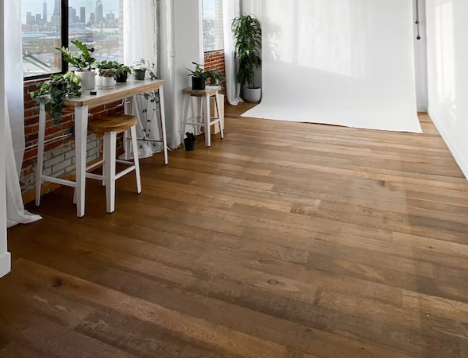
11. Stamped concrete – Driveways, patios, and interior floors that require an aesthetic appearance generally use stamped concrete. This architectural concrete allows the creation of realistic patterns such as natural stones, tiles, and granites using professional stamping pads.
12. Self-consolidating concrete – As the name suggests, this type of concrete consolidates by its weight without entailing the use of vibration. Such a concrete mix has high workability.
13. Prestressed concrete – Mega concrete projects use pre-stressed concrete units where the bars used in the concrete are stressed before the actual application of the service load. The construction process requires the tensioned bars to be placed firmly from each end of the unit. It makes the lower section of the structure stronger against the tension. Usually, the assembly of pre-stressing units takes place at the construction site. The construction of bridges, fly-overs, heavy-lo.
14. Precast concrete – Small units like concrete blocks, poles, concrete lintels, staircase units, and precast walls use precast concrete. The advantage of precast concrete is that it is manufactured according to individual specifications. The assembly of the units takes place at the construction site.
15. Shotcrete concrete – Shotcrete concrete is different from other types of concrete in the way it is applied. It is shot into a structural frame with the help of a nozzle. The process involves shooting the concrete at a high air pressure that results in simultaneous placing and compacting.
16. Lightweight concrete – Concrete having a density lower than 1920 kg/cubic meter is called lightweight concrete. Some of the typical aggregates used to manufacture lightweight concrete are pumice, scoria, and perlites. It is used in applications such as the construction of long-span bridge decks and their building blocks.
17. High-density concrete – Also known as heavyweight concrete, this type of concrete has a density in the range of 3000 to 4000 kg/cubic meter. High-density concrete is prepared using heavyweight aggregates such as barytes. Some common applications of this type of concrete include the construction of atomic power plants where ensuring high resistance against any kind of radiation leak is of utmost importance.
18. Polymer concrete – In polymer concrete, the aggregates bond with the polymer rather than cement which in turn helps in reducing the volume of voids in the aggregates. There are three types of polymer concrete which include polymer impregnated concrete, partially impregnated polymer concrete, and polymer cement concrete.
19. Air-entrained concrete – It is a special type of concrete where air, gas, or foam is purposely infused in up to 6% of the concrete.
20. Limecrete – Limecrete involves the use of limestone instead of cement in the preparation process. It has applications in the construction of floors, domes, and vaults.
21. Pervious concrete – Pavements and driveways use pervious or permeable concrete as it allows stormwater to percolate into the ground. Such concrete can solve drainage issues.
22. Glass concrete – This modern concrete uses recycled glass as aggregates to increase the aesthetic appeal of the structure. Besides being durable, this concrete provides thermal insulation.
23. Vacuum concrete – This concrete mix contains a higher proportion of water. Their preparation process involves the suction of excess water using a vacuum pump without waiting for the concrete mixture to set. This process hastens the strengthening period of the structure from 28 days to around ten days.
- Pumped concrete – High-rise construction requires the pumping of the concrete to great heights. Hence, in these construction sites pumped concrete, which is fluid in nature with high workability, is used to enable the pumping of the concrete mix through pipes or flexible hoses.
- Normal-strength concrete – Normal-strength concrete is similar to plain concrete as the same ingredients are used in its preparation. There is an initial setting time of around 30 to 90 minutes, depending on the properties of the cement being used and the weather conditions at the site. The strength of this type of concrete is between 10 MPa and 40 MPa.
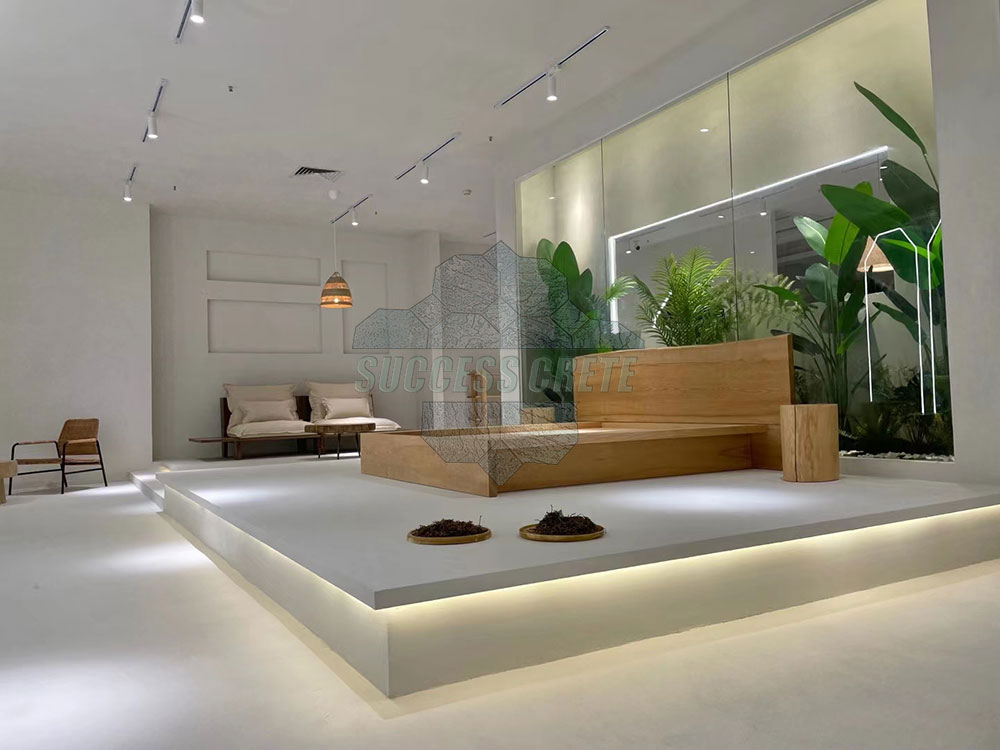
The Pros and Cons of self leveling Concrete
Advantages of self-leveling Concrete
Low maintenance
Concrete flooring is increasingly popular for both residential and commercial applications due to its low-maintenance properties.
Unlike other flooring material that requires significant effort and regular upkeep, concrete floors can be easily mopped or swept up and have very few requirements in terms of cleaning products.
In addition to being easy to care for, concrete floors also offer durability. In high-traffic areas especially, concrete provides a smooth, hard surface that is well suited to taking everyday wear and tear without showing signs of damage.
Beautiful design options
With self-leveling concrete, you can get the look of a stylish floor without having to worry about extra installation time and cost.
Concrete self-levels into beautiful designs and shapes, giving you the freedom to explore a variety of options to customize your space.
From subtle patterns and textures to intricate designs in multiple colors, self-leveling concrete offers endless possibilities to inspire interior design and decor.
Heated floors
Self-Leveling Concrete (SLC) heated floors are the perfect choice to instantly upgrade your home while providing warmth and comfort.
The self-leveling capability ensures a smooth, sleek surface that blends seamlessly with any room in the house.
As the temperature goes from warm to hot, self-leveling concrete heated flooring spreads gentle warmth throughout your living space, giving you increased energy efficiency and a comfortable atmosphere at all times, especially when it’s very cold.
Self-leveling heated concrete floors are not only easy to install and maintain, but they also add value to your home, allowing you to enjoy luxury living at a fraction of the cost.
Environmental protection
Self-leveling concrete requires a fraction of the energy it takes to lay bricks or tiles, so it helps reduce energy consumption – another major benefit to the environment.
In addition, self-leveling concrete is durable and can last for decades! It doesn’t need to be replaced or refurbished as often, so resources aren’t wasted.
Finally, self-leveling concrete does not require grinding or finishing on site – this greatly reduces any dust particles that may be released into the atmosphere.
Thus, self-leveling concrete truly offers an opportunity to optimize environmental protection – something that is certainly worth considering for any construction project!
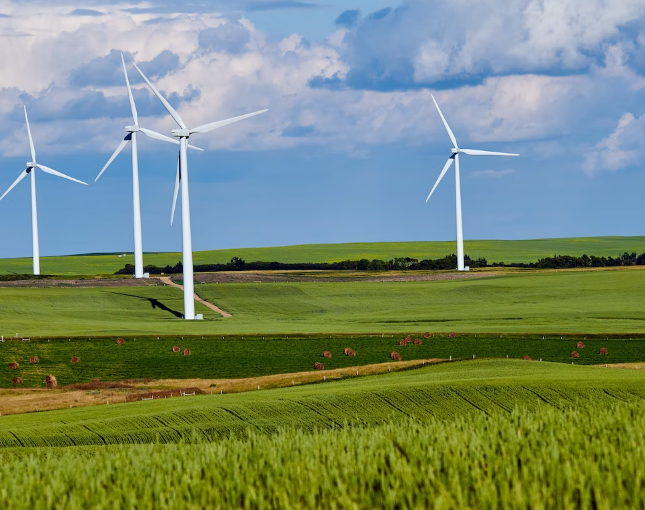
Disadvantages of self-leveling Concrete
However, self-leveling concrete does come with some disadvantages
Hardness
An obvious disadvantage of self-leveling concrete floors is their hardness.
From accidental falls to everyday furniture movement, self-leveling concrete floors are mostly rough compared to other flooring options such as vinyl or carpet, and can be uncomfortable to walk on if they are too hard.
Cracking
Another disadvantage of self-leveling concrete is cracking.
This can occur as a result of improper installation and insufficient drying time, creating weak spots that are prone to thermal stress and other problems.
If a self-leveling concrete floor is not properly cared for, then it may crack over time.
While self-leveling concrete usually comes with warranties and guarantees to prevent cracking, they often do not cover self-installation or improper use.

The Pros and Cons of Polished Concrete
Advantages of Polished Concrete
High durability
When it comes to flooring needs, polished concrete is a great practical choice! The smooth surface not only makes any space look smooth, but it provides long-term durability no matter how much foot traffic it experiences.
Longevity
Polished concrete is far superior to other flooring types such as Carpet, vinyl tiles, and wood laminate when it comes to longevity.
Polished concrete does not require any waxes or sealers because, unlike traditional finishes, needs to be replenished every few years to maintain its appearance.
Not only does this save you money in the long run, but it also means that you will enjoy the beauty of your concrete floor without having to invest in any maintenance.
Easy to maintain
Polished concrete floors offer the perfect combination of high-end style and low-maintenance upkeep. Polished concrete floors require very little effort to keep looking great – a simple dust mop and wipe with a damp cloth is all you need to ensure they retain their beautiful appearance.
Many design options
Polished concrete is a great way to add beauty to any floor. Its versatility allows for an impressive array of color, texture, and design options.
Whether your goal is to create a modern, sleek look or a space with an old, antique charm, polished concrete can help achieve the perfect balance between aesthetic appeal and function.
What’s more, You can also add decorative sculpting and template-printing graphics to the surface.
Anti-skid and wear-resistant
Polished concrete is a great choice for busy areas – like lobbies and supermarkets – because of its anti-skid and wear-resistant qualities.
Resistance to chemical attack
Polished concrete is incredibly resistant to chemical attack and corrosion, making it an excellent choice for areas that are susceptible to moisture and spills.
Electrostatic dissipation
Polished concrete has antistatic properties, which means that static electricity doesn’t build up as it does on other surfaces like carpet and tile.
This is especially helpful in places like technical offices or manufacturing warehouses, where sensitive electronics and machinery need to be protected from damage caused by static shocks.
Disadvantages of Polished Concrete
Cold
Polished concrete may have its benefits such as being easy to clean and maintain, but there is one downside that could put you off installing it in your home: cold floors.
Polished concrete is especially cold during wintertime since the material used for concrete flooring does not naturally retain heat, leaving your feet feeling even chilly.
Moisture
If a concrete floor is not properly finished and sealed, it can easily be infiltrated by moisture. If liquid does manage to get into the pores of the concrete floor, it will stay there and cause mold or bacteria to grow.
But if you have a trusted professional install your polished concrete floor, you don’t have to worry about this.
Loud
Another major drawback is their ability to greatly amplify noise.
Without sound-deadening measures, your home may feel like a large echo chamber.
To reduce the noise level of polished concrete floors, you can carpet your space and have heavy curtains for added soundproofing, as well as acoustic wall panels that help absorb any excess reverberation.
Are Concrete Floors Cheaper than Wood?
Concrete floor: color and finishes
Concrete flooring can be both stylish and functional.
Unlike other surfaces, you can put almost any color, finish or design you want on your floor. You can even mix different designs to create a beautiful mosaic pattern.
Concrete is an exceptionally durable material that will last for years and withstand heavy foot traffic. To maintain its good looks, you may need to repaint or refinish the surface over time.
Hardwood flooring: colors and finishes
Hardwood flooring comes in a variety of colors and finishes, from light to dark, natural tones to stains, so you’re sure to find the perfect look for your space.
Cost Comparison: hardwood AND concrete
Hardwood
Hardwood flooring adds a classic and elegant feel to any space, but it can also come with a hefty price tag. Hardwood is one of the more expensive flooring species, so it’s important to research the different options before making a purchase.
Because hardwoods are made from natural woods, they can often be very expensive. Brazilian cherry, maple, and mahogany floors are the most expensive of all hardwood floors.
Concrete
Concrete flooring is a great way to make your space look beautiful and cost-effective.
Concrete is an economical and durable material that can last for years if installed and maintained properly. Best for people with a limited budget.
It also provides an impressive finish, which means you don’t have to spend a lot of money on materials or labor to get a beautiful result.
Concrete flooring stands up to wear and tear, so it doesn’t need to be repaired or replaced as often, so it can save you even more money in the long run.
No matter what type of flooring product you install, material cost is an important consideration.
If you choose concrete, you can expect the material to cost 6-7 times less than premium hardwood floors. Therefore, laying polished concrete floors in a residential space is a cheaper option.
Even if you choose oak, the total cost is around $15 to $25 per square foot. But you can install polished concrete floors in your home for only $3.5 0 to $50 per square foot. The cost of a colored concrete floor is the same.
Conclusion
All things considered, concrete floors are more economical than other types of flooring.
Once the initial costs of concrete, self-leveling concrete, and installation are taken into account, concrete floors can remain relatively low maintenance and last longer than traditional flooring types.
If your business is interested in this project or if you have additional questions, please contact our team at sucesscrete.
We have over 20 years of experience in poured flooring and we believe we can help you achieve your vision of the perfect home.
We specialize in helping people just like you take on projects large and small. Contact us today for a free consultation!